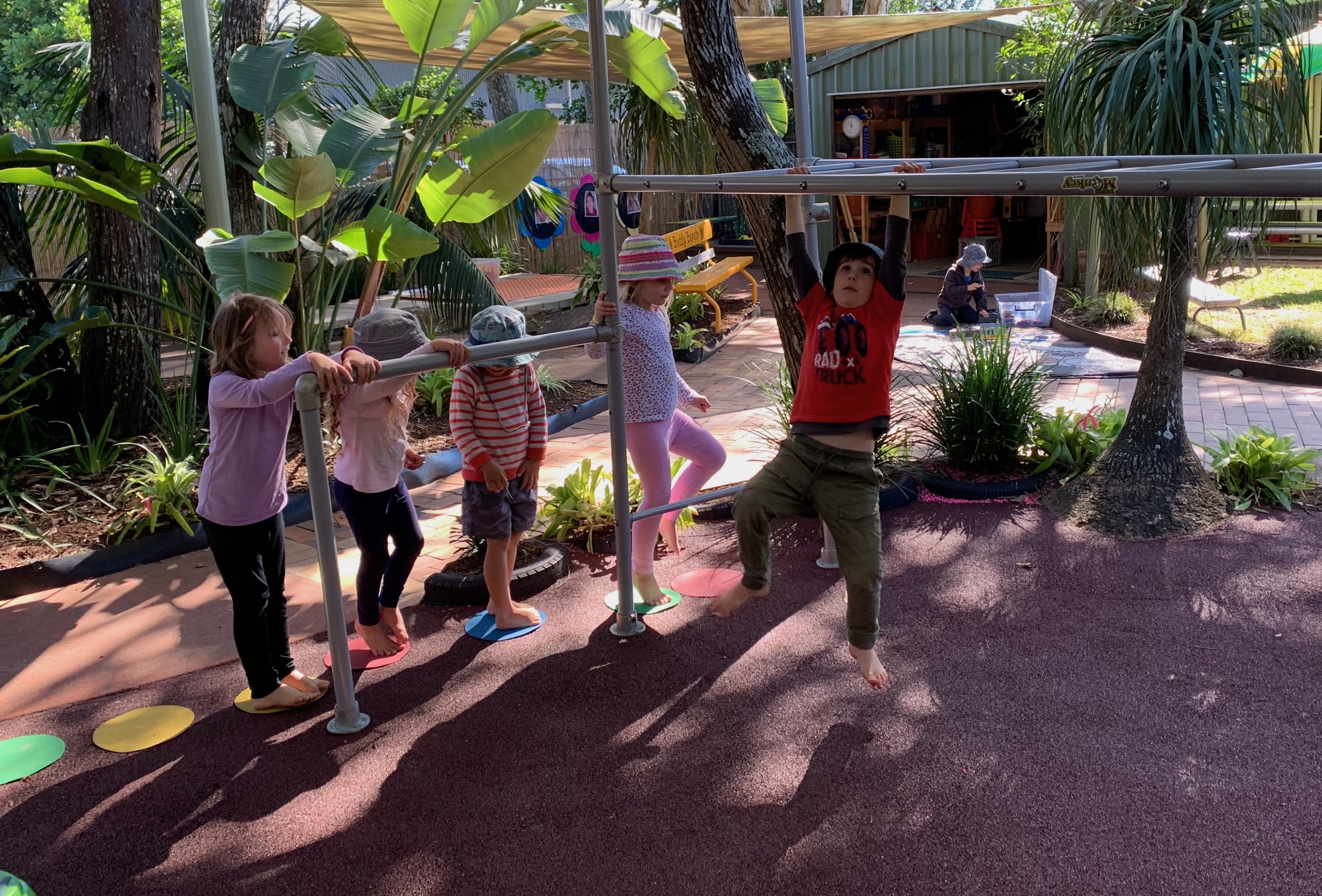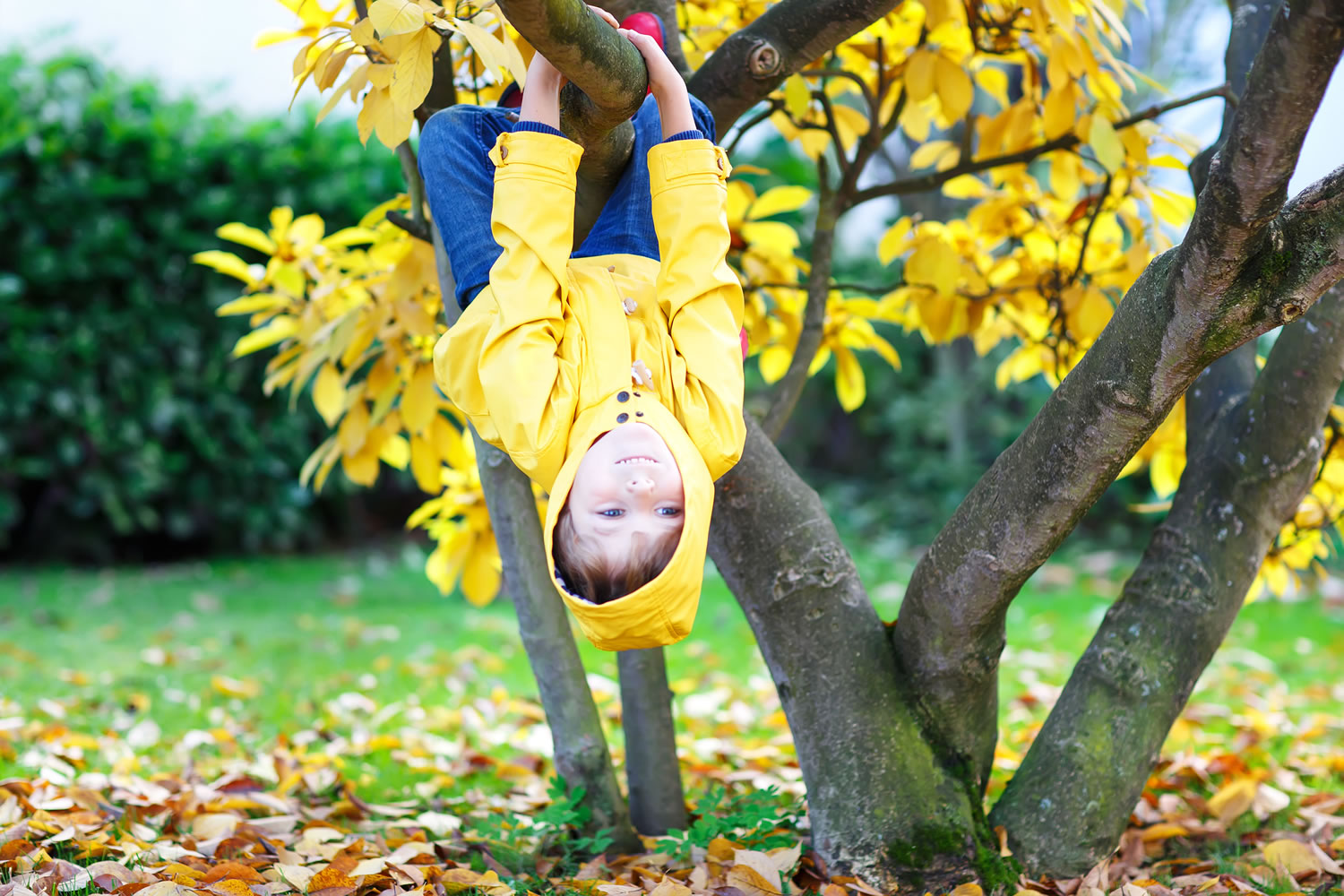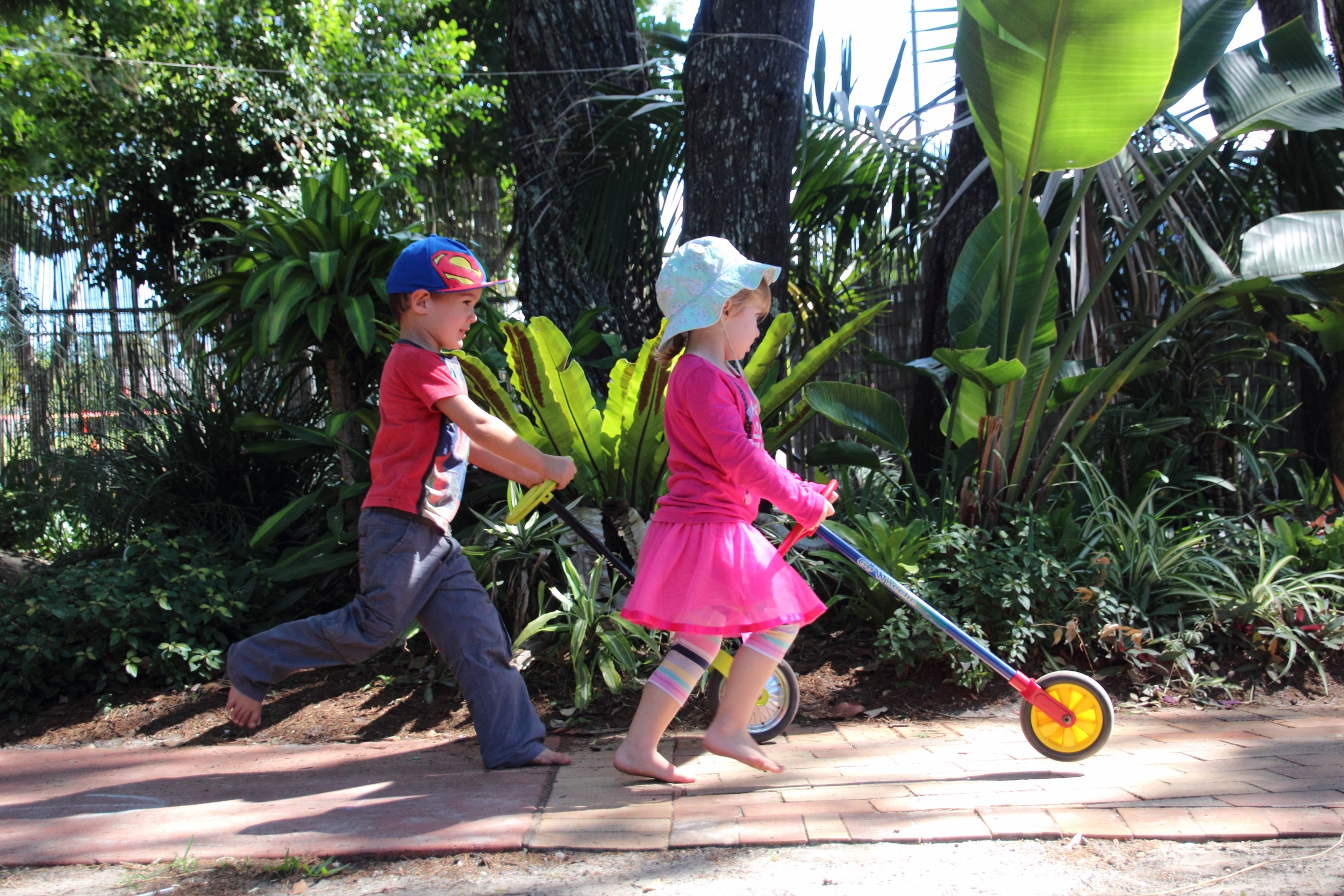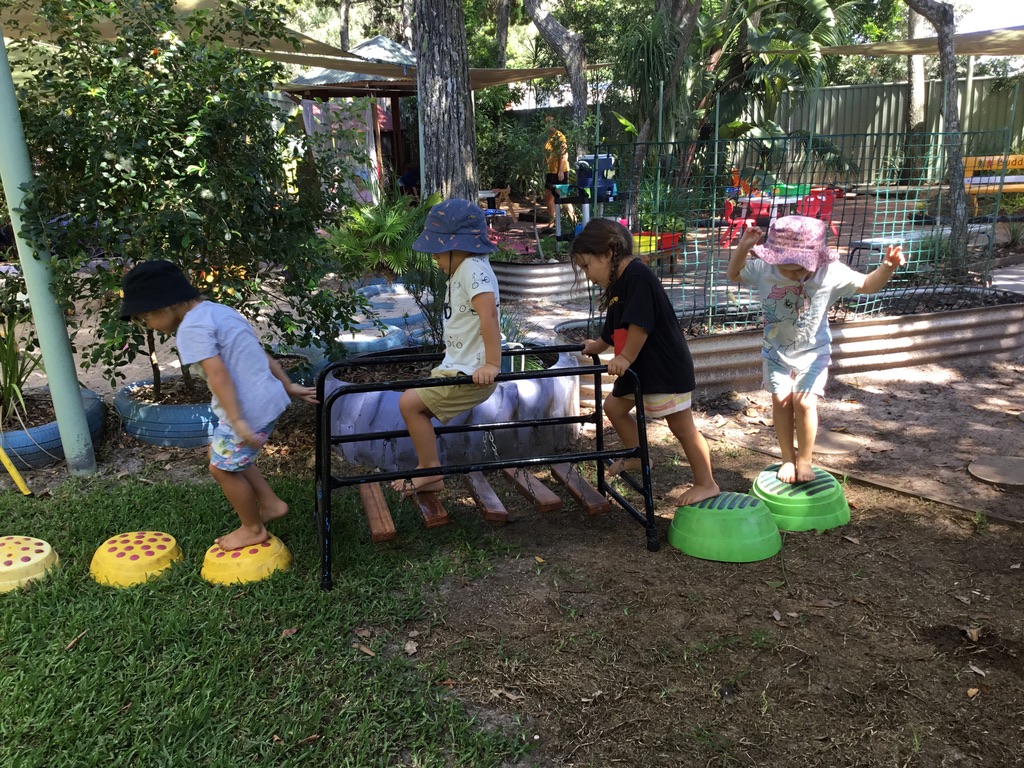This is one of the things we do best
Do you find yourself saying “Be careful” or “don’t go so high or fast” a lot?
Instead of stopping them. Support your children to asses their level of risk and safety and be specific about what a potential safety concern is in a calm manner. e.g. instead of ‘be careful’ label the risk. “I can see you are close to the edge. Did you see that? Do you feel safe?” “The knife you are using is very sharp on the end. Do you feel safe, can you tell me how you will use it safely” “I can see you are climbing very high, do you have a plan to get down?”
There are obviously times which are non-negotiable but before you intervene, ask yourself what the level of risk is and can you hold off and see what happens. Or can you ask them to assess the risk and decide how they can keep themselves safe.
Please read this weeks article to learn a little ore about Risky Play.
Tara



Why is Risky Play important for young children?
Why risky play is important for young children
Naturally you need to protect them from harm, however you’ve also got to give them the freedom to explore new experiences and challenges, and venture into territory that isn’t one hundred per cent safe.? This is called risky play and it’s increasingly becoming recognised as an important developmental opportunity for young children. This month we take a look at what risky involves, the key benefits and how to create more opportunities for children to experience risky play without compromising their safety.
Defining risky play
Risky play is a natural part of children’s play and is defined as a thrilling and exciting activity that involves a risk of physical injury; and play that provides opportunities for challenge, testing limits, exploring boundaries and learning about injury risk (Sandseter, 2007; Little & Wyver, 2008).?
According to Ellen Beate Hansen Sandseter, a professor at Queen Maud University in Trondheim, Norway, there are six different categories of risky play:
Great heights: Children climb trees and other structures to scary heights, from which they gain a birds-eye view of the world and the thrilling feeling of I did it!
Rapid speeds: Children swing on vines, ropes or playground swings; slide on sleds, skates or playground slides; shoot down rapids on logs or boats; and ride bikes, skateboards and other devices fast enough to produce the thrill of almost, but not quite, losing control.
Dangerous tools: Depending on the culture, children play with knives, bows and arrows, farm machinery (where work and play combine), or other tools known to be potentially dangerous. There’s great satisfaction in being trusted to handle such tools, but also a thrill in controlling them, knowing that a mistake could hurt.
Dangerous elements: Children love to play with fire, or in and around deep bodies of water, both which pose some danger.
Rough and tumble: Children everywhere chase one another around and fight playfully, and they typically prefer being in the most vulnerable position – the one being chased or the one underneath in wrestling (the position that involves the most risk of being hurt and requires the most skill to overcome).
Disappearing/getting lost: Little children play hide and seek and experience the thrill of temporary, scary separation from their companions. Older ones ventureoff, on their own, away from adults, into territories that to them are new and filled with imagined dangers, including the danger of getting lost.
The benefits of risky play
Risky play is crucial to a child’s development so it’s important that teachers and parents don’t prevent children from engaging in risky experiences and activities. Some of the key life-skill benefits to be gained from risky play include:
Building resilience and persistence; Balance and coordination – development of motor skills; Awareness of the capabilities and limits of their own bodies; The ability to assess and make judgement without risk; Handling of tools safely and with purpose; Understanding consequence to action; Confidence and independence; Resourcefulness; Creativity and inventiveness; Curiosity and wonder; Problem solving
On the flip side, children who don’t engage in risky play are more likely to be clumsy, less physically fit, have little control over motor skills, feel uncomfortable in their own body, have poor balance, a fear of rapid movement and will be less able to manage risk.
Taking risks in a safe environment
Your role as an early educator is to ensure that children have opportunities to enjoy all the benefits of risky play, but without any serious injuries taking place.? Risks can be categorised as either a challenge or a hazard. Challenges are something that children can negotiate which might be appropriate for certain situations – such as a tall climbing frame. However, hazards can be dangerous, and you might need to remove or modify them – for example if that climbing frame had loose planks or sharp edges which could result in children sustaining an injury.? Tips for approaching potential hazards:
Avoid treating each hazard with the same degree of seriousness.
Identify which ones need modification, removal or replacing.
Assess whether you can reframe and turn a hazard into a safe challenge instead.
Remember that children should always be supervised and take caution with regards to any equipment that’s used for risky play. For example, put away scissors or sharp tools after an activity, and lock the gate that leads to a more advanced playground if it’s unsupervised.
How to create more opportunities for risky play
If you’re looking for some tips on how to introduce more risky play into your early childhood service, here are a few ideas:
Be gender equal: Whether it’s intentional or not, many carers tend to encourage boys to be messy little adventurers more than they do with girls. So be sure to treat everyone equally by commenting when any child pushes their boundaries and leaves their comfort zone;
Little tradies: Under supervision, let children use woodwork benches with real tools and accessories such as hammers, nails and screws;
Food preparation: Encourage children to help educators cut up fruit or other items or take part in cooking things like pizzas, or damper on a fire pit to help educate about fire safety;
Excursions: Take children on outings to places like the bush or beach to explore nature and navigate things like road safety, not getting lost or climbing on the rocks at the beach;
Loose parts play: Give children items such as plastic pipes, milk crates, large reels, ropes, pulleys, wooden boxes, sticks and logs to play with;
Allow physical play: Let kids climb, jump, chase each other and challenge their unique individual physical skills;
Encourage creativity: Allow the use of playground equipment in non-traditional ways, such as going up the slide and not down it;
Support always: Give children the opportunity to solve and make decisions with your support.

Instead of “be careful”
Build awareness
Notice how?… The rock a slippery when wet, small breaches break easily.
Do you see?… Your friend there, where to go from here
I am… Here if you need, I seeing you try hard
Can you hear… The wind, that cracking sound, your friends
Do you feel… The rock moving, the heat of the fire, like trying again
I can see you are… Feeling hesitant, excited upset, courageous
How will you? Join in, Alex
Problem solve
What is your plan? To get up, to support your friend
What can you use? To open that, for your mission
Where will you? Go after that
How will you? Get down, get up
I can see you can’t do it yet? It’s great that you are keeping on trying
What is courage in childhood?
Try new things even if they are scared, like learning to ride a bike or entering a new social situation.
Keep trying to master a new skill even when they are frustrated or other children laugh at their attempts.
Do the ‘right’ thing in difficult situations, like standing up for another child who is being bullied.
Admit to mistakes, like owning up to breaking a neighbour’s window while playing ball and then apologising and offering to help clean up and pay for the damage.
